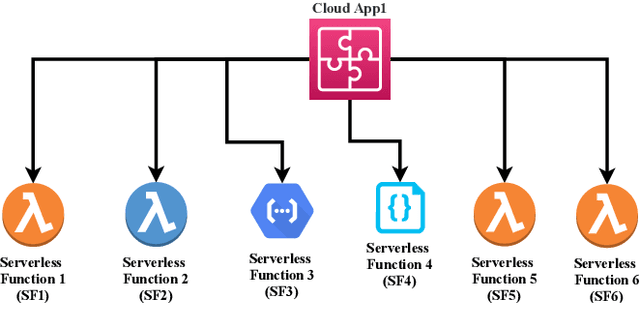Shivananda Poojara
DeF-DReL: Systematic Deployment of Serverless Functions in Fog and Cloud environments using Deep Reinforcement Learning
Nov 05, 2021



Abstract:Fog computing is introduced by shifting cloud resources towards the users' proximity to mitigate the limitations possessed by cloud computing. Fog environment made its limited resource available to a large number of users to deploy their serverless applications, composed of several serverless functions. One of the primary intentions behind introducing the fog environment is to fulfil the demand of latency and location-sensitive serverless applications through its limited resources. The recent research mainly focuses on assigning maximum resources to such applications from the fog node and not taking full advantage of the cloud environment. This introduces a negative impact in providing the resources to a maximum number of connected users. To address this issue, in this paper, we investigated the optimum percentage of a user's request that should be fulfilled by fog and cloud. As a result, we proposed DeF-DReL, a Systematic Deployment of Serverless Functions in Fog and Cloud environments using Deep Reinforcement Learning, using several real-life parameters, such as distance and latency of the users from nearby fog node, user's priority, the priority of the serverless applications and their resource demand, etc. The performance of the DeF-DReL algorithm is further compared with recent related algorithms. From the simulation and comparison results, its superiority over other algorithms and its applicability to the real-life scenario can be clearly observed.
 Add to Chrome
Add to Chrome Add to Firefox
Add to Firefox Add to Edge
Add to Edge